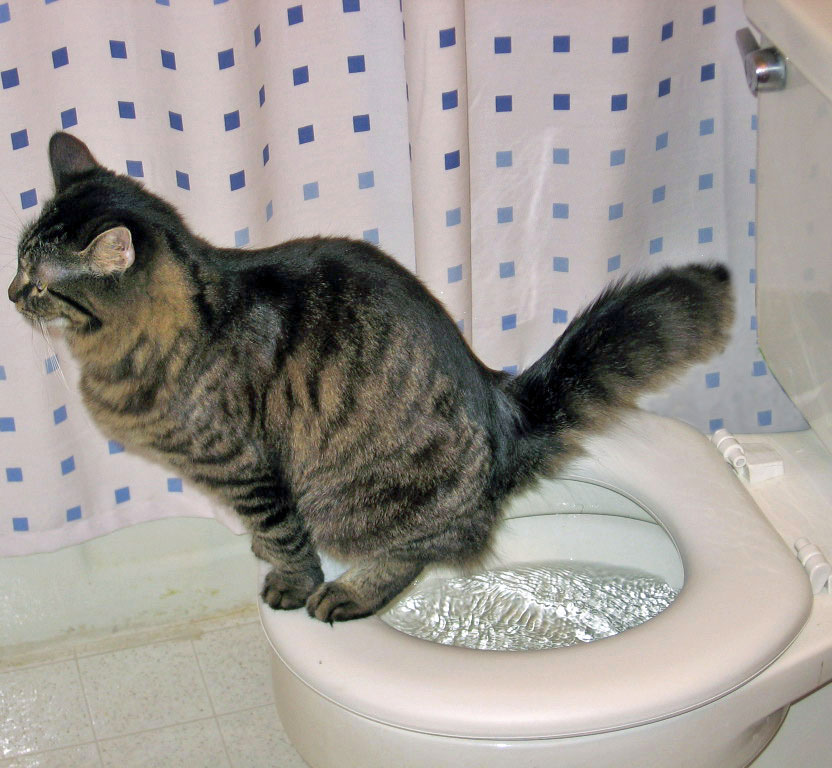Hazards of Flushing Cat Poop Down Your Toilet - Avoid Possible Problems
Hazards of Flushing Cat Poop Down Your Toilet - Avoid Possible Problems
Blog Article
The article author is making a number of great points about Don’t flush cat feces down the toilet in general in this article underneath.

Introduction
As pet cat proprietors, it's necessary to be mindful of just how we throw away our feline pals' waste. While it may appear practical to purge cat poop down the commode, this practice can have detrimental effects for both the environment and human health and wellness.
Environmental Impact
Flushing feline poop presents unsafe microorganisms and bloodsuckers right into the water supply, presenting a substantial risk to aquatic environments. These impurities can adversely influence marine life and compromise water quality.
Health Risks
In addition to environmental issues, flushing cat waste can also pose health threats to human beings. Feline feces may contain Toxoplasma gondii, a bloodsucker that can create toxoplasmosis-- a potentially severe ailment, particularly for expecting females and people with weakened immune systems.
Alternatives to Flushing
The good news is, there are safer and a lot more liable ways to throw away cat poop. Think about the complying with alternatives:
1. Scoop and Dispose in Trash
The most usual technique of taking care of feline poop is to scoop it into a naturally degradable bag and throw it in the trash. Make certain to utilize a dedicated litter inside story and dispose of the waste immediately.
2. Use Biodegradable Litter
Select biodegradable pet cat litter made from products such as corn or wheat. These trashes are environmentally friendly and can be securely disposed of in the trash.
3. Hide in the Yard
If you have a backyard, take into consideration hiding pet cat waste in an assigned location far from vegetable gardens and water sources. Make certain to dig deep adequate to avoid contamination of groundwater.
4. Set Up a Pet Waste Disposal System
Buy a pet waste disposal system particularly created for pet cat waste. These systems make use of enzymes to break down the waste, minimizing odor and ecological effect.
Verdict
Responsible pet possession prolongs beyond providing food and sanctuary-- it likewise includes appropriate waste management. By avoiding purging feline poop down the bathroom and selecting alternative disposal approaches, we can lessen our ecological footprint and safeguard human wellness.
Why Can’t I Flush Cat Poop?
It Spreads a Parasite
Cats are frequently infected with a parasite called toxoplasma gondii. The parasite causes an infection called toxoplasmosis. It is usually harmless to cats. The parasite only uses cat poop as a host for its eggs. Otherwise, the cat’s immune system usually keeps the infection at low enough levels to maintain its own health. But it does not stop the develop of eggs. These eggs are tiny and surprisingly tough. They may survive for a year before they begin to grow. But that’s the problem.
Our wastewater system is not designed to deal with toxoplasmosis eggs. Instead, most eggs will flush from your toilet into sewers and wastewater management plants. After the sewage is treated for many other harmful things in it, it is typically released into local rivers, lakes, or oceans. Here, the toxoplasmosis eggs can find new hosts, including starfish, crabs, otters, and many other wildlife. For many, this is a significant risk to their health. Toxoplasmosis can also end up infecting water sources that are important for agriculture, which means our deer, pigs, and sheep can get infected too.
Is There Risk to Humans?
There can be a risk to human life from flushing cat poop down the toilet. If you do so, the parasites from your cat’s poop can end up in shellfish, game animals, or livestock. If this meat is then served raw or undercooked, the people who eat it can get sick.
In fact, according to the CDC, 40 million people in the United States are infected with toxoplasma gondii. They get it from exposure to infected seafood, or from some kind of cat poop contamination, like drinking from a stream that is contaminated or touching anything that has come into contact with cat poop. That includes just cleaning a cat litter box.
Most people who get infected with these parasites will not develop any symptoms. However, for pregnant women or for those with compromised immune systems, the parasite can cause severe health problems.
How to Handle Cat Poop
The best way to handle cat poop is actually to clean the box more often. The eggs that the parasite sheds will not become active until one to five days after the cat poops. That means that if you clean daily, you’re much less likely to come into direct contact with infectious eggs.
That said, always dispose of cat poop in the garbage and not down the toilet. Wash your hands before and after you clean the litter box, and bring the bag of poop right outside to your garbage bins.
https://trenchlesssolutionsusa.com/why-cant-i-flush-cat-poop/

I was shown that write-up on How to Dispose of Cat Poop and Litter Without Plastic Bags from an acquaintance on another blog. Sharing is good. You never know, you may just be helping someone out. We take joy in reading our article about How to Dispose of Cat Poop and Litter Without Plastic Bags.
Browse Website Report this page